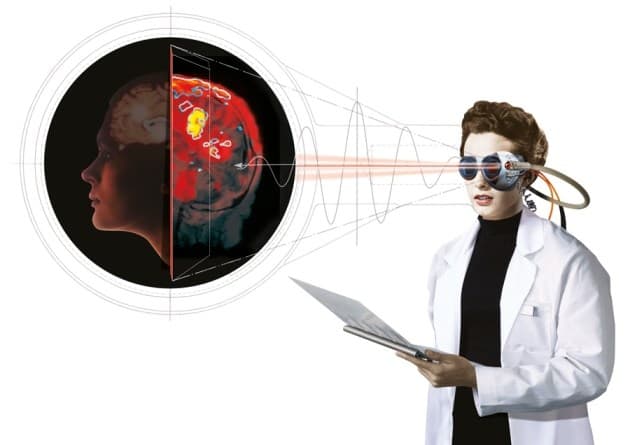Seeing Through Opaque Materials Possible Using Light - Prove Scientists
Now this may sound like something from a really bad sci-fi movie, but it is not. Through a series of independent experiments over a period of 8 years, scientists have actually found a way to see through opaque material with the help of light. Their research hasn’t got as far as applying it to the practical world but they claim they will reach the goal sooner than later.
Much like most of the historic discoveries, the beginning of the thought process of the possibility to see through impervious objects, came about with an accidental outcome to an experiment. Back in 2007, scientists Allard Mosk and Ivo Vellekoop tried to pass a beam of light through a glass covered with white paint. To control the transmission, they used a spatial light modulator and they kept a detector on the other side of glass to pick up the light transmission. The result was not what they had expected. The detector picked up the light beams at an intensity more than 100 times than what they thought it would.

When the visible light meets an opaque object, there are two things that can happen. One the light is absorbed by the material. Two, the photons of the light are scattered throughout the material. Now, it is easier (and better) to work with scattered photons than with the absorbed ones. The scientists thought that using the scattered photons, they will try to construct a useable image of the object on the other side of the opaque entity.
Needless to say, the major advantage of this technology, if it ever becomes a reality, will be in the field of medicine. The visible light images of a person’s internal organs can reduce the need of intrusive surgeries, the recovery period of which are high. The problem of reconstructing images by scattered photons has already been solved by astronomers. They use ‘adaptive optics’, which is a technology that has the algorithm to calculate how exactly the atmosphere has blurred the imaging of a particular star. But this algorithm has a major problem. It uses the fact that the stars are internally illuminated which is not the case with the human body.
The good news is that the researchers have been successfully obtained optical focusing through thin but biological tissue like mouse ears. The bad news is that they are still facing problems to pass it through thicker tissue, not only because of the thickness, but also because the human tissue moves and stretches. Nonetheless, the fact they have thought about and are working in this field is commendable. Hopefully, we will soon see optical focusing device that work on the human body too.
Source: #-Link-Snipped-# | Via: <a href="https://www.theverge.com/2015/2/15/8041597/x-ray-vision-opaque-material-allard-mosk" target="_blank" rel="nofollow noopener noreferrer">Scientists have found a way to see through opaque material using light - The Verge</a>
Much like most of the historic discoveries, the beginning of the thought process of the possibility to see through impervious objects, came about with an accidental outcome to an experiment. Back in 2007, scientists Allard Mosk and Ivo Vellekoop tried to pass a beam of light through a glass covered with white paint. To control the transmission, they used a spatial light modulator and they kept a detector on the other side of glass to pick up the light transmission. The result was not what they had expected. The detector picked up the light beams at an intensity more than 100 times than what they thought it would.

When the visible light meets an opaque object, there are two things that can happen. One the light is absorbed by the material. Two, the photons of the light are scattered throughout the material. Now, it is easier (and better) to work with scattered photons than with the absorbed ones. The scientists thought that using the scattered photons, they will try to construct a useable image of the object on the other side of the opaque entity.
Needless to say, the major advantage of this technology, if it ever becomes a reality, will be in the field of medicine. The visible light images of a person’s internal organs can reduce the need of intrusive surgeries, the recovery period of which are high. The problem of reconstructing images by scattered photons has already been solved by astronomers. They use ‘adaptive optics’, which is a technology that has the algorithm to calculate how exactly the atmosphere has blurred the imaging of a particular star. But this algorithm has a major problem. It uses the fact that the stars are internally illuminated which is not the case with the human body.
The good news is that the researchers have been successfully obtained optical focusing through thin but biological tissue like mouse ears. The bad news is that they are still facing problems to pass it through thicker tissue, not only because of the thickness, but also because the human tissue moves and stretches. Nonetheless, the fact they have thought about and are working in this field is commendable. Hopefully, we will soon see optical focusing device that work on the human body too.
Source: #-Link-Snipped-# | Via: <a href="https://www.theverge.com/2015/2/15/8041597/x-ray-vision-opaque-material-allard-mosk" target="_blank" rel="nofollow noopener noreferrer">Scientists have found a way to see through opaque material using light - The Verge</a>
0
